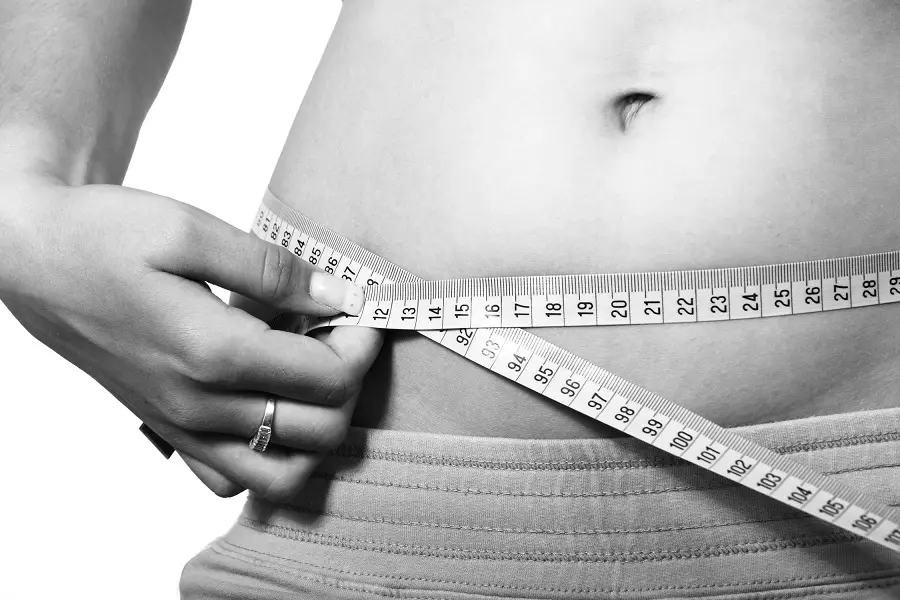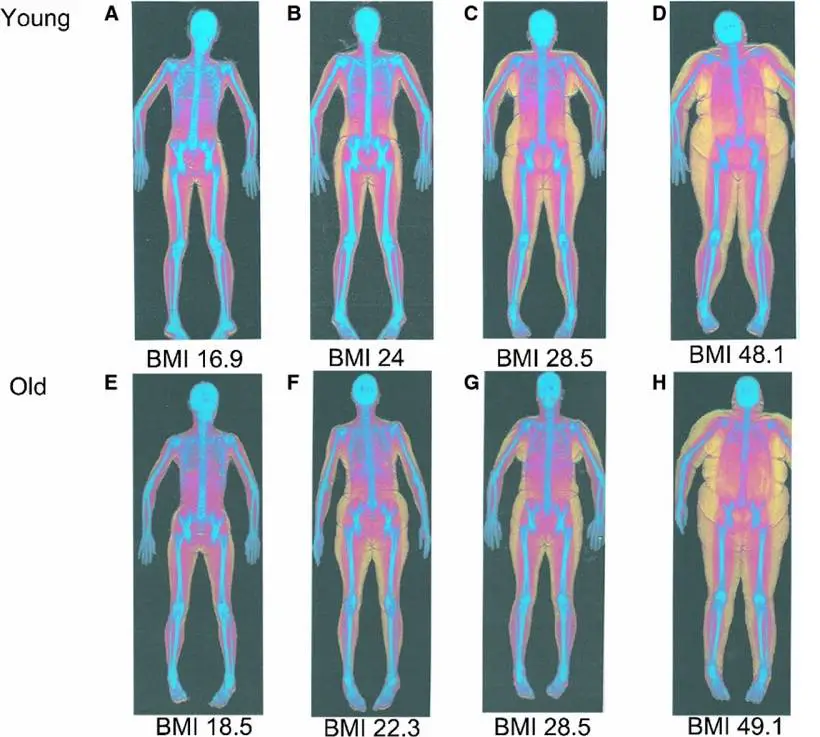Overall body fat amount is a sum of essential body fat and the extra body fat, stored as a reserve. Essential body fat is present in the bone marrow, organs and nerve tissues and is vitally important for normal functioning of the human body.
The extra body fat is basically a source of stored energy for later use, much like the gas tank found in cars.
Overall body fat percentage is a good indicator of a physical condition of an individual. Higher body fat percentage indicates poor physical condition while lower body fat percentage indicates good physical condition. But how to properly asses or measure body fat percentage?
Body fat percentage

Usually, having a lower body fat percentage is safer. Having a high percentage of body fat is dangerous, particularly when it is located on the abdomen.
In fact, the higher the percentage, the greater the risk of diabetes, cardiovascular disease, stroke, osteoarthritis, even cancer. Body fat can be measured via a number of ways, with accurate body composition measurements testing the percentage of fat mass to lean tissue; generally, though, home measurements are less accurate than those conducted in a healthcare facility.
See body fat percentage chart for more information.
The most reliable methods
Several methods exist. Some more accurate, some less accurate. More accurate methods are usually more expensive.
1. DEXA – dual-energy x-ray absorptiometry
The most accurate way to determine your body fat percentage is a DEXA (dual-energy x-ray absorptiometry) scan, that you can get in a healthcare facility or in a physiology lab (but you will need a referral from your doctor). The x-rays determine how much fat, muscle and bone you have both throughout your body, and in specific body parts like the legs.

This is a rather swift procedure where you lie on a table with the x-ray machine scanning your body from above
2. NIR (near-infrared interactance)
Another reliable reading is an NIR (near-infrared interactance), because it takes into account your weight, height, and body type. An NIR device makes use of a fiber optic probe and a computerized spectrophotometer; the infrared light emitted by the probe is absorbed by the fat and muscle, and reflected back.
The body fat percentage is obtained by factoring in these measurements with predictive equations. Your doctor or physiotherapist can give you an NIR reading, or you can get it at the gym or health club.
3. Measuring bio-electrical impedance
A highly accurate method is measuring one’s bio-electrical impedance. Testing the resistance of your body fat to electricity, the bio-electrical impedance method measures how much fat you carry compared to your muscle and bone tissues.
Simply get barefoot and stand on the metal plates of a bio-electric impedance analyzer or grip the handles with your bare hands (depending on the type of machine); the analyzer will then send a small electrical signal through your body.
While the electrical current is generally harmless, this method is not suitable for people with pacemakers. Everyone else can get this type of test in any physical therapy office or at the gym.
Less accurate methods
Measuring body fat with calipers
Rather popular, yet not so highly accurate method of measuring body fat is with the use of calipers. These simple devices will tell you right away what your percentage is.
For men, best place to measure body fat is chest, abdomen or thighs. For women, best place to measure body fat is triceps, suprailiac or thighs.
Calipers are usually pretty accurate, yet an error of +/- 5% might occur. So if your measured body fat percentage is shown on caliper scale as 25%, the real result could be either 20% or 30%. Measuring with calipers is also prone to user error – the results rely heavily on the proper pinch and location of measurement.
Least accurate methods
1. BMI – body mass index
Though not the most reliable method, both a medical professional and you as the layperson can determine your BMI, or Body Mass Index, regardless if you are an adult woman or man. You can do so by calculating your weight (in kilograms) in regard to your height (in meters). Such calculation can give you a general picture of how much fat you have in your body and whether you have a healthy weight (a BMI of 18.5 to 24.9), or are underweight (below 18.5), overweight (25 – 29.9) or clinically obese (above 30).
To be truly accurate, the BMI must be calculated differently for Asians because of their body build, as follows: below 18.5 means underweight, 18.5-23.9 signals a healthy weight, 24-26.9 means overweight, while a BMI above 27 shows obesity.
Under-aged people, pregnant and nursing women, as well as athletic people will have a high BMI that is not representative of their health or fitness level.
2. Measuring waist circumference
When looking at the correlation between body fat and the risk of disease, measuring your waist circumference is more helpful. With no clothes covering your top body, wrap a tape measure around your lower abdomen, between your bellybutton (or the bottom of your ribs) and your hip bones. Breathe out and take your measurements, but make sure not to press down on your abdomen.
This type of measurement is also gender and ethnicity dependent. Thus, men with a waist size over 94cm are at risk, while men over 102cm are at high risk; Asian men over 90cm in waist circumference are also at high risk. For women, there is a risk when their waists are over 80cm, and a high risk at over 88cm. Asian women, on the other hand, are at high risk at over 80cm. Read more on how to get rid of love handles.
Final considerations
Lowering your body fat percentage reduces your risk of disease, and can help you tone your abs and be more fit. This is all the more important for those people who tend to collect the fat around their waists, which puts them at a greater risk for high blood pressure, coronary heart disease, and diabetes.









































